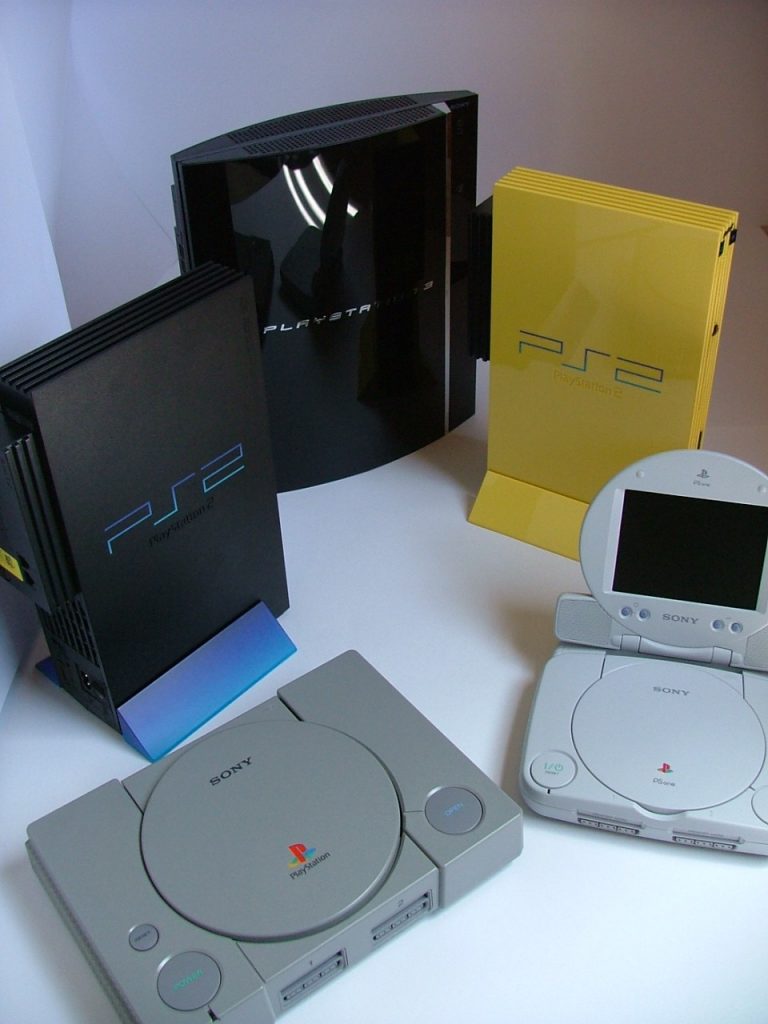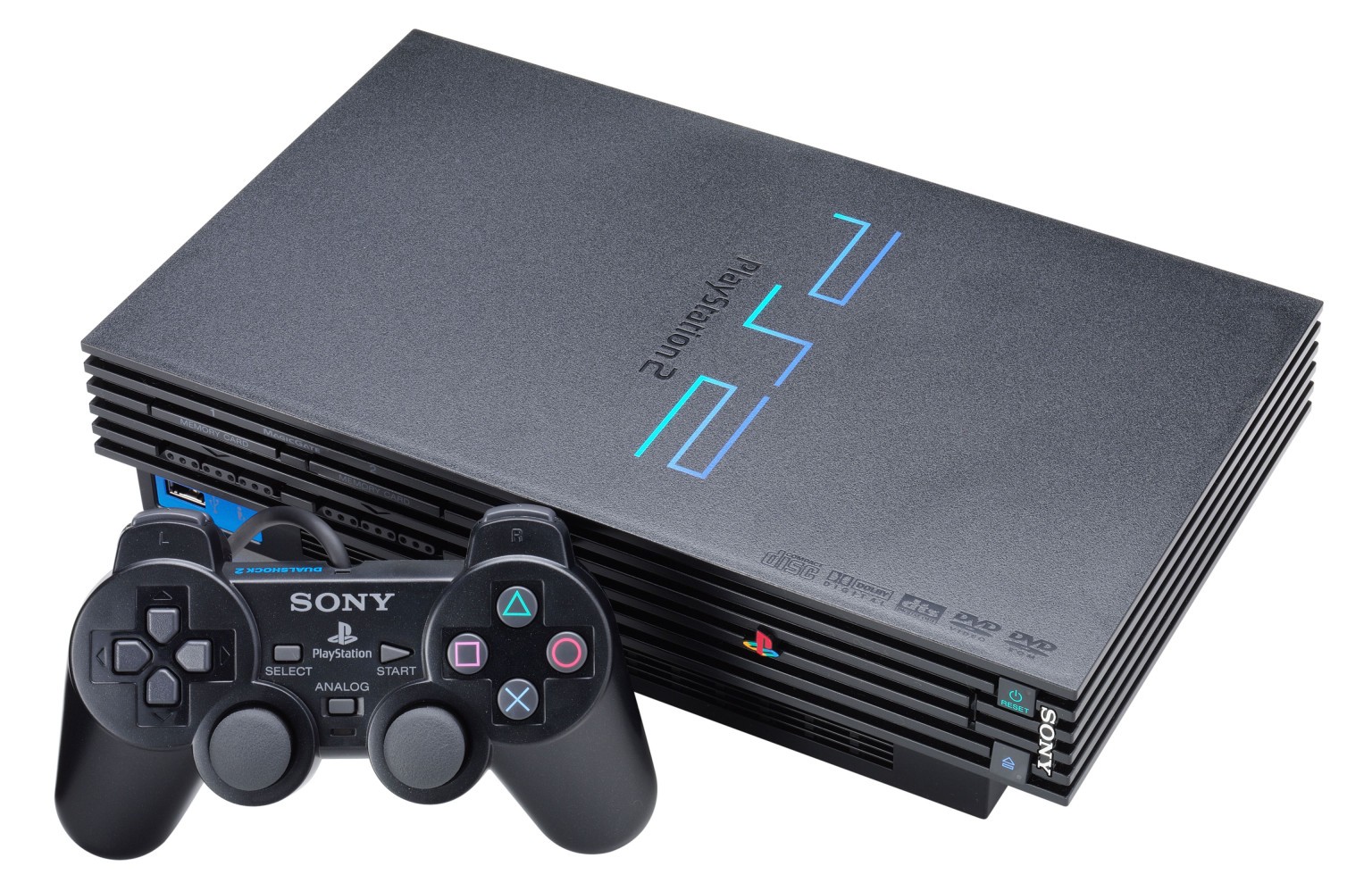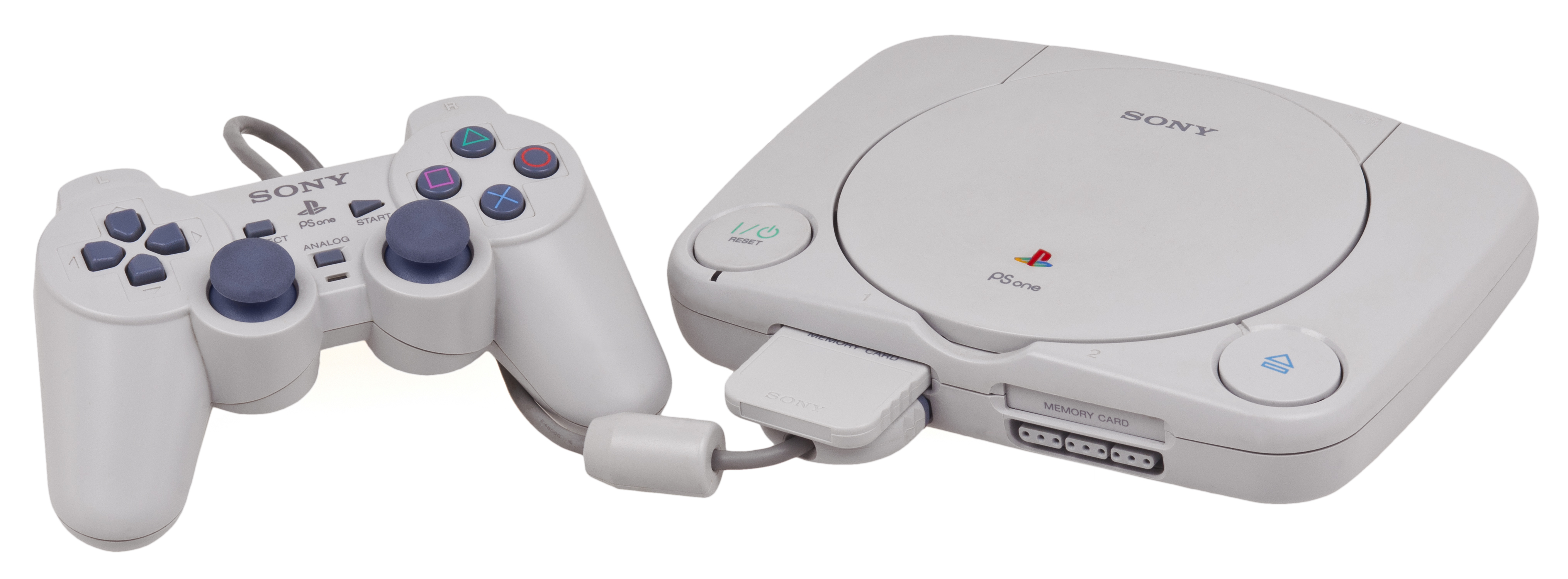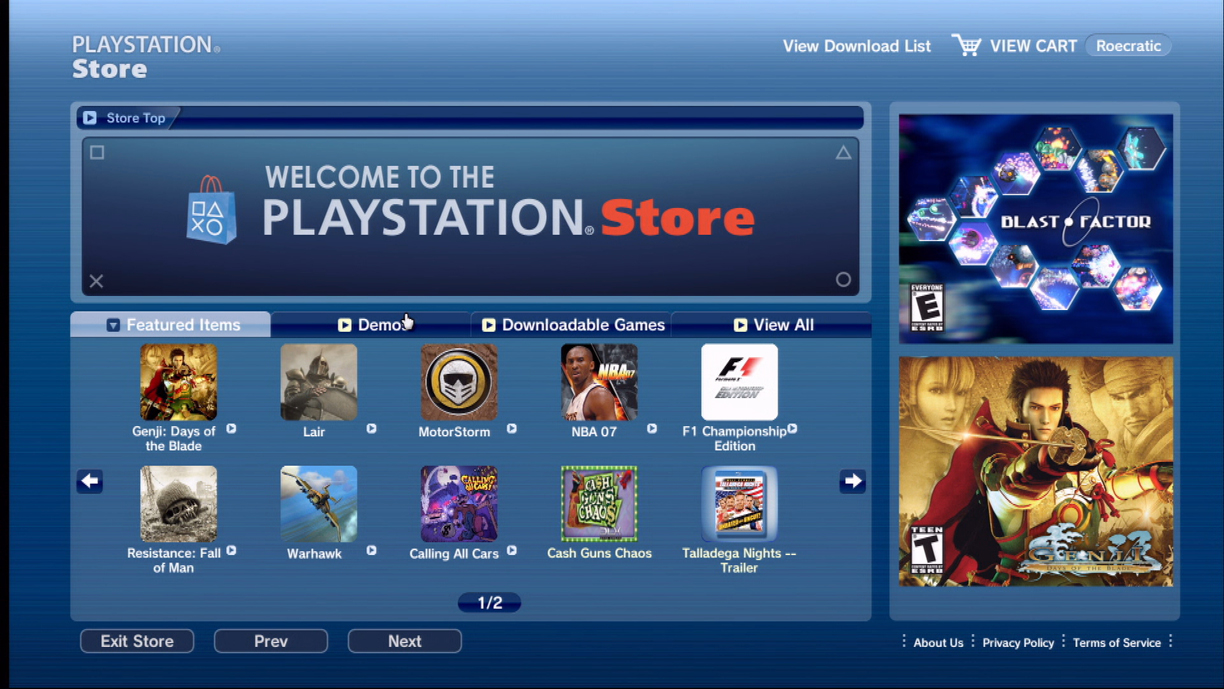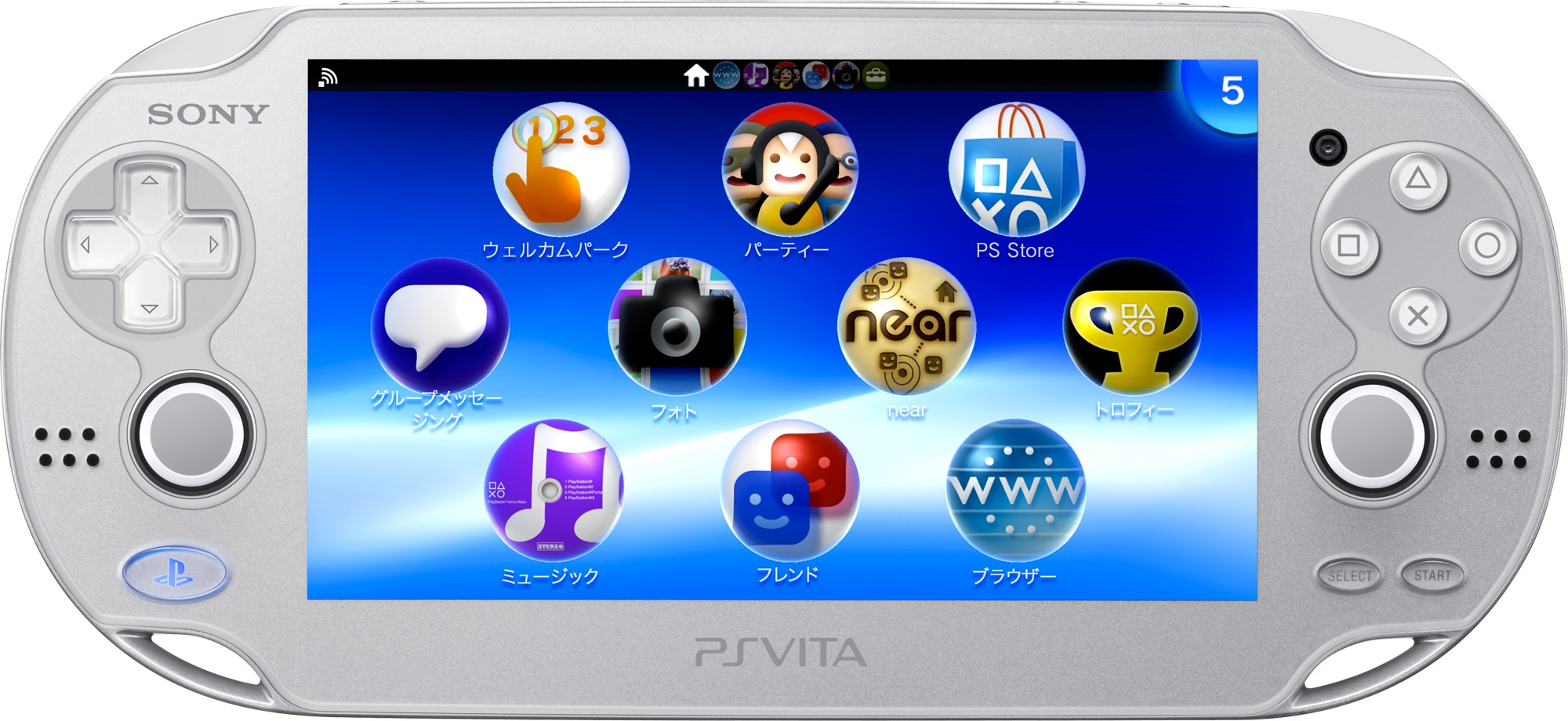Regardless of whether or not you’re a dedicated Sony aficionado or just have a passing interest in PS-related swag, you have to admit that the PlayStation Empire has in fact, changed or affected the world at large in many ways. Most obviously, those closely connected to the world of gaming have seen the word “PlayStation” become synonymous with video gaming itself. By contrast, before the first PlayStation console was introduced, “Nintendo” was on top and the obvious example of what interactive entertainment stood for. When the original PSX came onto the scene however, all bets were off, it heralded the arrival of an entirely new era of gaming.
Compared with the capabilities of other consoles released during that time, the original PlayStation offered gamers and developers alike an entirely new platform with which they could explore and express their ideas (respectively). Had it not been introduced, many of our favorite titles and technical advancements might not have even occurred at all (or perhaps not in the same manner). Even if you absolutely loathe everything PlayStation, you have to admit that Sony’s efforts (at the very least) led to increased competition among video game companies, which undoubtedly propelled us all forward toward new heights.
Naturally, there have been ups and downs since the days of the PSX, with Nintendo or Microsoft pulling ahead in various categories from time to time. However, through it all, the PlayStation juggernaut has held its ground, and with the release of the PS4 imminent, it would seem that another significant commercial triumph is just around the corner for the company. But before we get lost in what the PS4 has to offer, let’s go back and explore the history of the PlayStation itself…
Origins
While the build-up and subsequent explosion of the PS Empire was certainly part of a large concerted group effort, it could be said that everything started with a single individual, Ken Kutaragi. Known as “the Father of the PlayStation”, Ken Kutaragi took a job at Sony right after graduating from Denki Tsushin University in 1975. While many might not readily realize it, Mr. Kutaragi has had a hand in solving many of the problems which led to the development of a large number of integrated video gaming technologies which we all take for granted to this very day. In fact, Sony, at the time, didn’t even consider video gaming to be a reputable or potentially lucrative area of investment at all. It was only after Kutaragi’s insistence that they pursue such endeavors that they started funding his “Super Famicon CD” project (which was a hybrid Nintendo / CD player console which never saw the light of day). However, the crux of his efforts was eventually reframed into a new device which was called “Play Station”. Fast-forward a few years and we see the release of the original PlayStation console.
The Original “PlayStation”
On December 3, 1994 in Japan, the original PlayStation was released upon an unsuspecting public. Just to demonstrate the incredible popularity of the console, games for the 1st PlayStation were still being produced up until 2006, when Sony finally cancelled production for it. What made this console different from all the others was the fact that it relied on CD’s in lieu of cartridges, which had more or less dominated the gaming landscape. The original PS more or less single-handedly brought 3-dimensional gaming to the forefront, and because of the introduction of the optical disc format, new things also become possible. For example, the new storage capacity of discs meant that developers were free to explore new possibilities which simply weren’t going to happen as long as they were tied to cartridges. This new medium also meant that game publishers could produce a larger volume of gamers at a lower cost, which flooded the market with a very large number of titles, which certainly met with the approval of a large number of gamers. The PS1 also introduced the ability to play other types of media such as Video CD’s as well as conventional audio CD’s; needless to say, this paved the way for later gaming consoles to function as a one-stop home entertainment systems. The original PlayStation also introduced the basic DualShock controller design, which continues to be a basic mainstay of each and every subsequent console / system introduced.
The PlayStation 2
Given the incredible success garnered from the PS1, work and research was carried out to produce a worthy successor, which become the PS2. Simply put, the PlayStation 2 is the greatest selling console of all-time (up to this point) and official production of the device was only recently halted earlier this year (January 4, 2013). Originally introduced in Japan on March 4, 2000, the PS2 represented a marked improvement on multiple fronts, most noticeably in the graphics and sound departments. Over 3,800 titles have been released for the PS2 to date, of which over 1 ½ billion copies have been sold. The PS2 also introduced the DVD format to consoles as well as that of online capabilities and the use of extended accessories like the EyeToy, remote control, microphones, and computer mice. In fact, the popularity of the PS2 appears to remain as strong as ever with an extremely large dedicated base of retro gamers and some companies still producing games for the console. Some statistics: as of March 31, 2012, the PlayStation 2 has sold over 155 million units worldwide.
The PSone
Directly following the release of the PS2, a new compact version of the original PlayStation was released dubbed the “PSone”. Aside from being dramatically smaller than its forerunner, the PSone also featured some other cosmetic changes included the removed of the reset button as well as an updated graphical user interface. A small LCD screen add on was also offered for users who might want to add a PlayStation system to their automobile.
The PSX
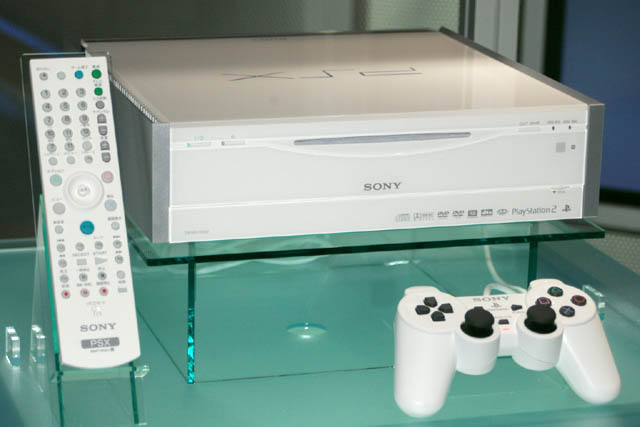
On December 13, 2003 the PSX was released. In essence, the PSX is essentially a PS2 with the capabilities of a DVR recorder. In all honesty, the PSX was a fairly revolutionary forward-thinking device, a console that was trying to tie all the features of your basic home entertainment setup into one unit. For example, it was able to record video/audio as well as receive TV signals and perform complex video editing. Moreover, the PSX could also be used to do audio and image editing; when you add to this the fact that it was also a fully capable PS2 console with backwards compatibility for PS1 games, you have a very unique item on your hands. Unfortunately for Sony, the PSX was much too far ahead of its time to become a household item, probably due to its rather hefty price tag.
The PS2 Slimline
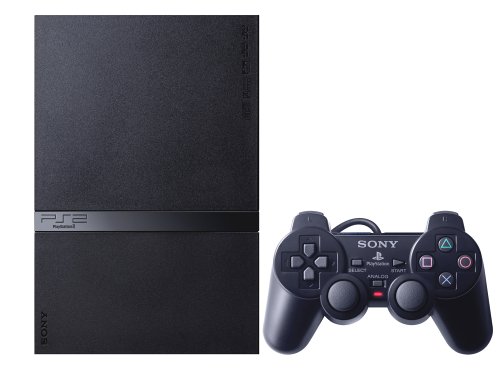 Taking a nod from the manner in which the PS1 was updated and perhaps streamlined in 2004, Sony decided to produce a smaller, more compact version of the PS2 which they branded as the “Slimline”. In terms of its capabilities, the PS2 Slimline is more or less exactly the same; however it’s much smaller, lighter and featured an integrated Ethernet port for online gaming. It’s also worth noting that the Slimline model was noticeably quieter than the original PS2, which certainly catered directly to the needs of more than a few gamers out there.
Taking a nod from the manner in which the PS1 was updated and perhaps streamlined in 2004, Sony decided to produce a smaller, more compact version of the PS2 which they branded as the “Slimline”. In terms of its capabilities, the PS2 Slimline is more or less exactly the same; however it’s much smaller, lighter and featured an integrated Ethernet port for online gaming. It’s also worth noting that the Slimline model was noticeably quieter than the original PS2, which certainly catered directly to the needs of more than a few gamers out there.
The PSP (PlayStation Portable)
 Released in Japan on December 12, 2004 and in North America on March 24, 2005, the PSP was the first example of truly versatile hand-held gaming console. Up until the release of the PSP, most hand-held gaming devices were graphically lackluster and completely devoid of any other functionality apart from playing games. Utilizing a UMD (Universal Media Disc) optical disc system, the PSP brought an exciting number of titles to gamers on the go, many of which come directly from the PlayStation’s ever-popular back catalog. Boasting a fairly large viewing screen with nice color graphics and the ability to view multimedia from various sources, the PSP was the first hand-held console to integrate web-browser software. Additionally, the concept of remote play was introduced through the PSP, which allows a hand-held unit to connect to a conventional console such as the PS3.
Released in Japan on December 12, 2004 and in North America on March 24, 2005, the PSP was the first example of truly versatile hand-held gaming console. Up until the release of the PSP, most hand-held gaming devices were graphically lackluster and completely devoid of any other functionality apart from playing games. Utilizing a UMD (Universal Media Disc) optical disc system, the PSP brought an exciting number of titles to gamers on the go, many of which come directly from the PlayStation’s ever-popular back catalog. Boasting a fairly large viewing screen with nice color graphics and the ability to view multimedia from various sources, the PSP was the first hand-held console to integrate web-browser software. Additionally, the concept of remote play was introduced through the PSP, which allows a hand-held unit to connect to a conventional console such as the PS3.
The PlayStation 3
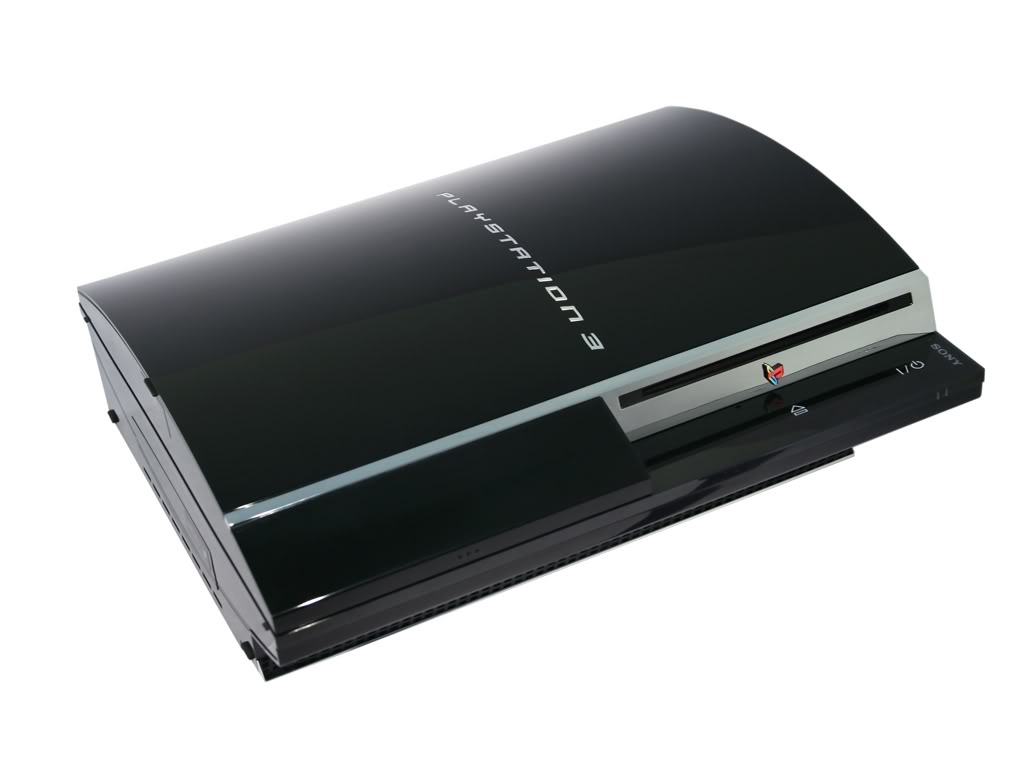 Next we have the console which most of you no doubt know and love, the PS3, which was released November 11 in 2006. Simply put, the PS3 upped the ante significantly as far as gaming consoles are concerned in almost every way imaginable. Aside from introducing the Blu-Ray format to consoles, the PS3 expanded the very notions of what many consider to be a home gaming device. Perhaps the most notable of its achievements (outside of providing incredible HD graphics) was its ability to allow users to interact with one another via the PSN (PlayStation Network). The PSN has since grown into a dedicated online services system which is not only facilitating multiplayer gaming, but also the delivery of a wealth of multimedia services as well as social media interactions. Hand-held consoles such as the PSP (and the Vita, which we’ll cover in a minute) are also able to connect to the PS3 wirelessly. Although the capability was removed on later models, the earlier PS3 versions were fully backwards compatible with older PS2 and PS1 titles (no doubt taking a note from the PS2 there). However, the real advancement that came with the introduction of the PS3 was the incredible software lineup (of which, developers are still adding to even as we speak) that its enhanced graphical prowess affords. In multiple industry tests, the PS3 was shown to be the most powerful of its generation, surpassing the technical capabilities of both the Wii as well as the Xbox 360. The PS3 has more or less fully cemented the idea that a gaming console can act as an entertainment hub.
Next we have the console which most of you no doubt know and love, the PS3, which was released November 11 in 2006. Simply put, the PS3 upped the ante significantly as far as gaming consoles are concerned in almost every way imaginable. Aside from introducing the Blu-Ray format to consoles, the PS3 expanded the very notions of what many consider to be a home gaming device. Perhaps the most notable of its achievements (outside of providing incredible HD graphics) was its ability to allow users to interact with one another via the PSN (PlayStation Network). The PSN has since grown into a dedicated online services system which is not only facilitating multiplayer gaming, but also the delivery of a wealth of multimedia services as well as social media interactions. Hand-held consoles such as the PSP (and the Vita, which we’ll cover in a minute) are also able to connect to the PS3 wirelessly. Although the capability was removed on later models, the earlier PS3 versions were fully backwards compatible with older PS2 and PS1 titles (no doubt taking a note from the PS2 there). However, the real advancement that came with the introduction of the PS3 was the incredible software lineup (of which, developers are still adding to even as we speak) that its enhanced graphical prowess affords. In multiple industry tests, the PS3 was shown to be the most powerful of its generation, surpassing the technical capabilities of both the Wii as well as the Xbox 360. The PS3 has more or less fully cemented the idea that a gaming console can act as an entertainment hub.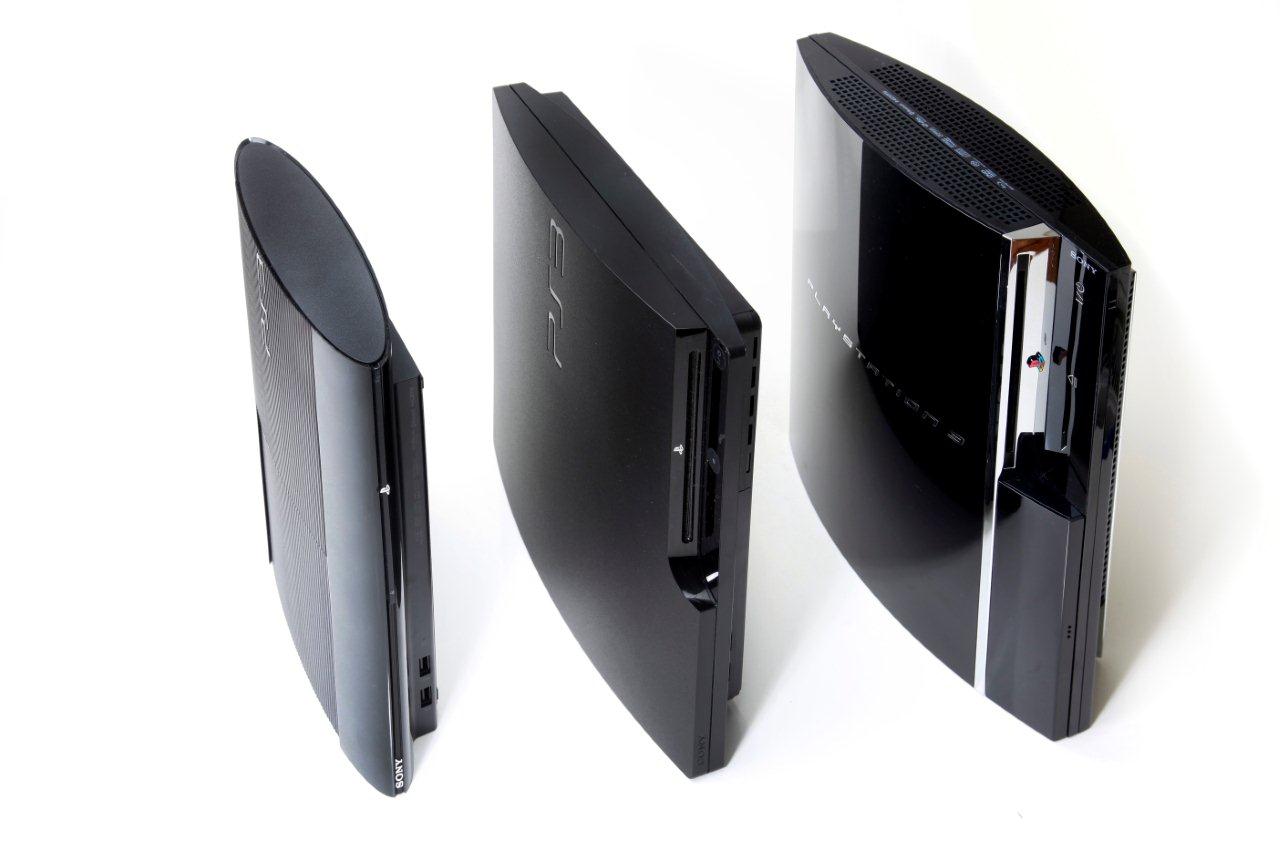 Two subsequent versions of the PS3 were also released, the “Slim” and “Super Slim”. The Slim model is said to be “33% smaller, 36% lighter, and consumes 34% to 45% less power than the previous model”, which is certainly an admirable engineering achievement to say the least given the power of the PS3 itself. The Super Slim model is essentially a reworking of the “Slim” design whereby the total weight of the console is once again dropped by nearly 3 more pounds. The “Super Slim” also features a redesigned case and door covering for its disc drive (a 250 or 500 Gigabyte hard drive also become standard with the Super Slim).
Two subsequent versions of the PS3 were also released, the “Slim” and “Super Slim”. The Slim model is said to be “33% smaller, 36% lighter, and consumes 34% to 45% less power than the previous model”, which is certainly an admirable engineering achievement to say the least given the power of the PS3 itself. The Super Slim model is essentially a reworking of the “Slim” design whereby the total weight of the console is once again dropped by nearly 3 more pounds. The “Super Slim” also features a redesigned case and door covering for its disc drive (a 250 or 500 Gigabyte hard drive also become standard with the Super Slim).
The PlayStation Network (PSN)
Also in 2006, the PSN was introduced, which has helped to completely revolutionize the way gamers receive media, interact with other people and view gaming in general. What’s more, for PS3 owners, the PSN was offered as a completely free service which is “always on, always connected” which sharply contrasts that of the Xbox 360’s paid subscription model. Simply put, the PlayStation Network serves as a central infrastructure whereby PS gamers of every shade can go to find out the latest news, get the latest titles, play online with others, or engage one or more multimedia services. Currently, moves are being made to push toward dedicated cloud gaming over the PSN, which will perhaps be fully introduced via the PS4 (pure speculation on our part of course).
The PlayStation Vita
In late 2011 and early 2012 the PlayStation Vita was released worldwide. The successor to the PSP, the Vita represented a marked improvement on multiple fronts, most notably in its ability to deliver better graphics and social connectivity. The vita is particularly noteworthy because it’s the first PlayStation console to add touch-screen capabilities – something that would later be done with the PS4’s controller. Moreover, the Vita supports Bluetooth, 3G as well as Wi-Fi connectivity, making it an extremely versatile gaming device as well as an internet / multimedia interface. Perhaps one of the most interesting things about the Vita is the fact that all PS4 are supposed to be available for “Remote Play” (where the Vita is wirelessly connected to a console such as the PS4) for it when connected, of course. In case you didn’t already know, the PS3 also features some connectivity with the Vita, although there is very little support for this at this time.
The PlayStation 4
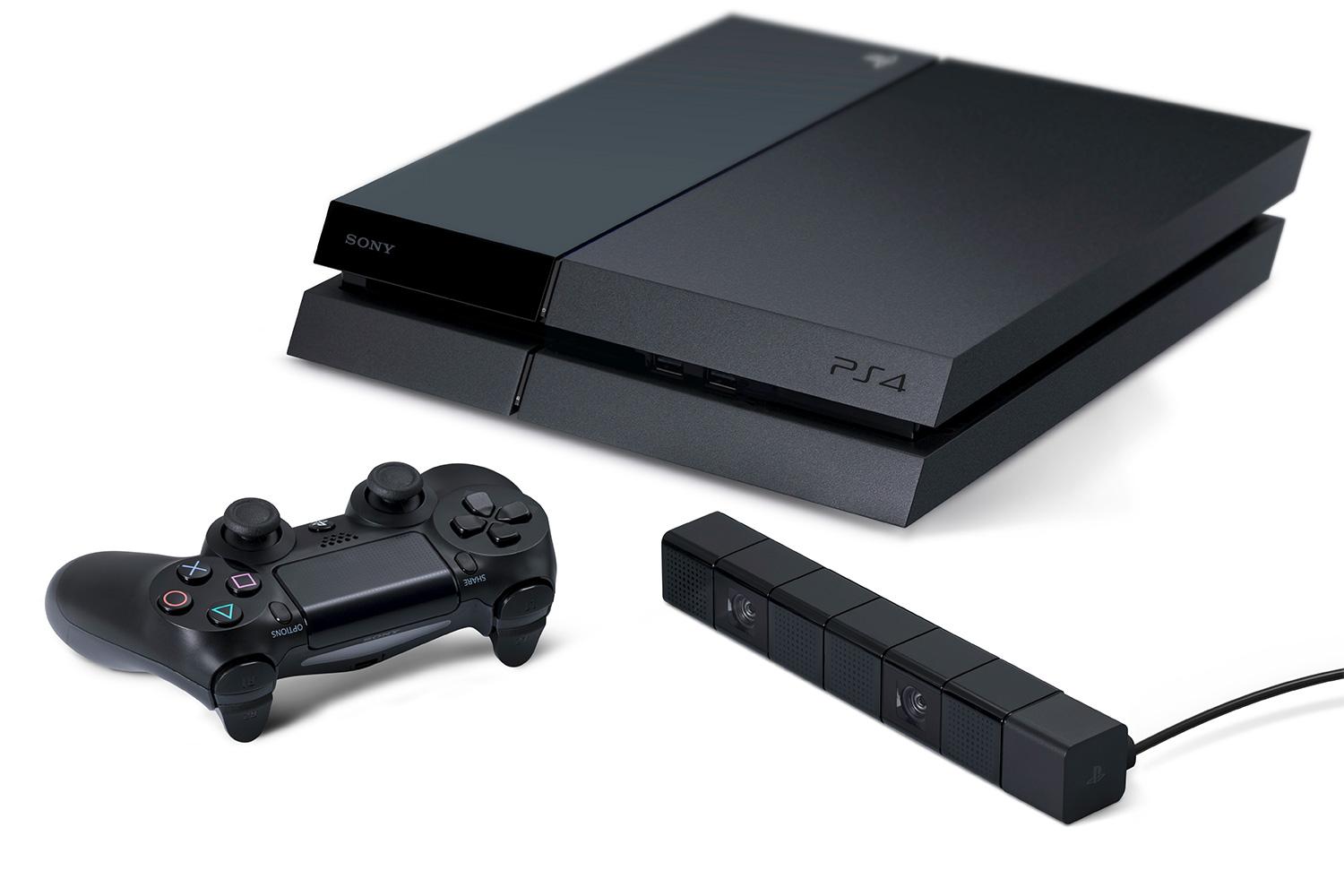 Last, but certainly not least, we have the PS4, which by all accounts is set to revolutionize the gaming world yet again, perhaps on a scale similar with that of the introduction of the PS2. So, just what is it that makes the PlayStation 4 so great, you ask? Aside from the fact that the soon-to-be-released 8th generation console is Sony’s flagship model, the PS4 could be likened to a super-powered gaming PC. The PS4 will have the ability to process multiple strings of information simultaneously also, which will allow gamers to do multiple things all at once, yet another first for consoles. Sony has also stated that it’s moving away from the complex architecture of the PS3 in favor of a more direct and perhaps simpler one which is both powerful as well as more intuitive for developers to work with. In essence, this means that we are likely to see games of a much higher caliber released which not only greatly expand what we thought was possible, but also reach new artistic heights as well. Likewise, Sony wants to PS4 to promote more social interaction via the PSN (now subscription-based service) and even adding a stream functionality which will allow other people to watch your gameplay in real-time. Moreover, a Gaikai-based cloud service is rumored to be added soon which will bring cloud gaming to the forefront and perhaps deliver titles to PSN users as well (without the need for lengthy downloads). Furthermore, adding to its expanded features, the PS4 is also going to support connectivity for smartphones or tablets, both of which can be used in game in some form or fashion.
Last, but certainly not least, we have the PS4, which by all accounts is set to revolutionize the gaming world yet again, perhaps on a scale similar with that of the introduction of the PS2. So, just what is it that makes the PlayStation 4 so great, you ask? Aside from the fact that the soon-to-be-released 8th generation console is Sony’s flagship model, the PS4 could be likened to a super-powered gaming PC. The PS4 will have the ability to process multiple strings of information simultaneously also, which will allow gamers to do multiple things all at once, yet another first for consoles. Sony has also stated that it’s moving away from the complex architecture of the PS3 in favor of a more direct and perhaps simpler one which is both powerful as well as more intuitive for developers to work with. In essence, this means that we are likely to see games of a much higher caliber released which not only greatly expand what we thought was possible, but also reach new artistic heights as well. Likewise, Sony wants to PS4 to promote more social interaction via the PSN (now subscription-based service) and even adding a stream functionality which will allow other people to watch your gameplay in real-time. Moreover, a Gaikai-based cloud service is rumored to be added soon which will bring cloud gaming to the forefront and perhaps deliver titles to PSN users as well (without the need for lengthy downloads). Furthermore, adding to its expanded features, the PS4 is also going to support connectivity for smartphones or tablets, both of which can be used in game in some form or fashion.
The history of the PlayStation is a long and storied one, with many more developments sure to come in the future. For serious gamers, the emergence of the PlayStation brand has helped to usher in more than just mere entertainment, it’s brought about a fundamental change in youth culture which many feel is on the whole, very positive. On the business side of things, it cannot be argued that the PlayStation Empire has also helped to create an entirely new multi-billion dollar industry which continues to drive global markets as well as sales of consumer electronics. Here’s to the legacy of the PlayStation kingdom, may it carry onward into the future producing new, futuristic consoles and devices which will spark imaginations and continue to delight audiences worldwide.
This post didnt have a specific author and was published by PS4 Home.

